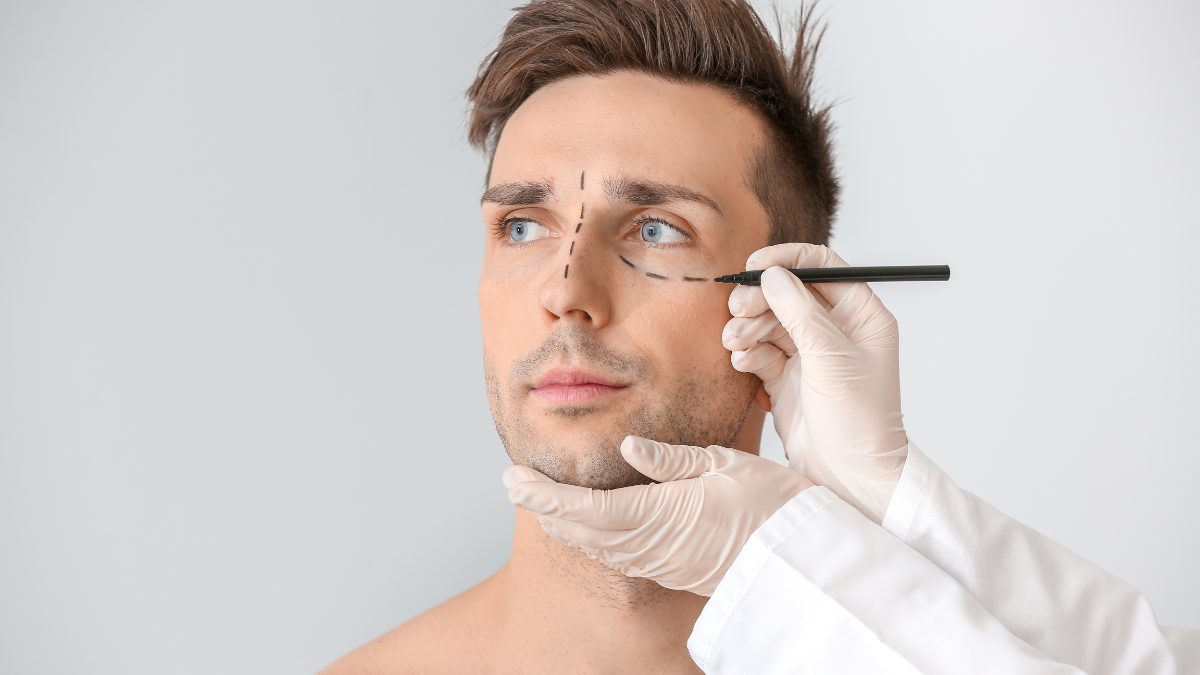Plastic surgeons in Texas balance two demanding worlds: elective cosmetic procedures where expectations are sky-high and reconstructive surgeries where outcomes can be life-changing. That mix makes the specialty rewarding but also exposes surgeons to unique malpractice risk.
While plastic surgery isn’t among the most frequently sued specialties, the cases that do arise can be severe. Allegations often involve dissatisfaction with results, implant complications, or post-surgical issues - and payouts in these claims are frequently higher than the state median across all specialties.
For surgeons in Texas, malpractice insurance is more than just protection against lawsuits - it’s often required to keep hospital or ASC privileges. Even when care meets accepted standards, aesthetic dissatisfaction alone can spark litigation. Add in higher-severity risks like BBLs, implants, and visible scarring, and the need for reliable coverage becomes clear.
Texas tort reform lowered the overall number of claims, but economic damages remain uncapped. That means cases that do proceed can result in very large awards. Coverage protects both your practice and your personal assets from these exposures while allowing you to continue practicing without disruption.

National studies estimate that approximately 15% of plastic surgeons face a malpractice claim each year. In Texas, the rate is somewhat lower thanks to tort reform, but claims that do reach litigation still carry substantial financial exposure. Importantly, unlike specialties where allegations typically involve delayed diagnosis or emergency scenarios, many plastic surgery claims stem from subjective dissatisfaction with aesthetic results, scarring, or implant-related complications.
Even when the outcome meets clinical standards, dissatisfaction alone drives many plastic surgery malpractice claims in Texas.

Texas Department of Insurance (TDI) Closed Claim Reports show that indemnity payments for plastic surgeons often exceed state medians across all specialties. While median indemnity for all Texas medical malpractice claims hovers around $100,000, plastic surgery payouts trend higher due to the elective nature of procedures and jury perception of cosmetic harm.
Defense costs are also a major factor. Even when cases are dismissed, average defense costs often exceed $25,000, and in paid claims, costs regularly surpass $80,000.
These defense-only claims still affect underwriting, driving premiums higher in metro markets.
Malpractice premiums for plastic surgeons in Texas vary widely depending on practice type, geography, and claims history. Unlike more uniform specialties, cosmetic-heavy practices are often priced differently than reconstructive-focused ones due to the elective nature of procedures and heightened patient expectations.

For perspective:
Malpractice liability in Texas is shaped heavily by tort reform. While these reforms have reduced overall claim frequency, when cases do proceed, they can involve substantial payouts - especially in plastic surgery where aesthetic dissatisfaction or permanent disfigurement is at issue.

Texas law requires that plaintiffs file an expert report within 120 days of filing suit, detailing how the standard of care was breached. This provision is one reason overall claim frequency has declined - weaker cases often fail before trial.
Texas tort reform has lowered overall malpractice premiums and reduced frivolous suits. However, plastic surgery remains uniquely vulnerable because:
Disclaimer: This overview is for informational purposes only and does not constitute legal advice. Surgeons should consult a qualified attorney for guidance on Texas malpractice law.
Plastic surgeons in Texas face malpractice risk across both cosmetic and reconstructive domains. While not the most frequently sued specialty, the cases that do arise are often high-severity - driven by aesthetic dissatisfaction, implant complications, or post-op issues.

Breast and facial implants are among the most common sources of litigation:
The BBL is widely regarded as one of the most dangerous cosmetic procedures due to risks of fat embolism, pulmonary complications, and even death. Carriers in Texas scrutinize BBLs closely, often requiring disclosure of fat grafting volumes and charging higher premiums.
Procedures such as rhinoplasty, facelifts, and blepharoplasty carry some of the highest litigation risk within plastic surgery because results are so visible.
While reconstructive surgeons face fewer claims, the severity of cases can be substantial.
With more patients traveling for surgery, virtual consultations have become common. These carry risk if:
Texas regulators and insurers remain vigilant about non–board-certified physicians or non-surgeons performing cosmetic procedures. These cases appear in TDI closed-claim reports and increase scrutiny on legitimate cosmetic practices across the state.
When it comes to medical malpractice insurance in Texas, most plastic surgeons end up choosing between claims-made and occurrence policies. The structure matters more than it seems at first glance, because it affects not just what you pay today, but also how you handle transitions down the road - whether that’s joining a new group, relocating, or retiring.

For most plastic surgeons here, claims-made is the default - but it does mean you’ll need to think ahead about tail or nose coverage.
In Texas, most surgeons carry $1 million per claim / $3 million aggregate per year. That’s considered standard. Some hospitals and surgery centers require higher limits, and some cosmetic practices voluntarily buy more because of the potential exposure tied to implants or BBLs. Higher limits naturally push premiums up, but group practices sometimes have room to negotiate.
Plastic surgeons in Texas can access coverage through two main markets: the admitted carriers regulated by the state and the excess & surplus (E&S) market. Which path makes sense depends on the mix of cosmetic versus reconstructive work, claims history, and where you practice.

Admitted carriers are state-regulated insurers that offer coverage under Texas Department of Insurance oversight. They generally prefer:
These policies often come with clearer terms and more predictable pricing. However, cosmetic-only practices - especially those tied to med spas - may find admitted carriers restrictive or unavailable.
The excess & surplus (E&S) market is designed for risks outside the appetite of admitted carriers. Plastic surgeons may be steered here if they:
Premiums in the E&S market are usually higher, but they provide flexible coverage when admitted options aren’t available. Brokers access this market through wholesalers who specialize in harder-to-place risks.
When a plastic surgeon applies for malpractice coverage in Texas, underwriters look far beyond the name of the specialty. They study the details of how you practice - procedure mix, patient setting, claims history, even how you handle expectations. For many surgeons, the underwriting review feels almost like a second credentialing process.
Carriers pay close attention to the types and numbers of procedures performed:

Documentation matters as much as surgical skill. Underwriters often ask about:
Surgeons who show they have structured consent and documentation systems in place tend to be looked at more favorably.
Even one prior claim can change the path from an admitted carrier to the E&S market. Underwriters will review:
A single indemnity payment doesn’t automatically disqualify, but it usually narrows options and increases premiums.
Group practices often benefit from shared experience and a stronger defense record, which carriers take into account. Solo practices - especially cosmetic-only - may face higher premiums because risk is concentrated on one surgeon without shared limits.
Texas tort reform has kept overall malpractice claim frequency lower than many other states, but for plastic surgeons, the severity of claims remains a major driver of cost. Even when the number of lawsuits is modest, a single payout can be several times higher than the state median.

In plastic surgery, it isn’t the number of claims that drives premiums - it’s the size of the payouts when claims are filed.
Even when cases are dismissed, surgeons pay through defense costs:
For surgeons, this means that “winning” a case still comes at a cost, and carriers price this reality into premiums.
Since Texas capped non-economic damages in 2003, overall claim frequency has declined across all specialties. But for plastic surgeons, two realities remain:
Coverage needs change throughout a surgeon’s career. The type of practice you run - and the transitions you make - often matter as much as your specialty itself. Here are the situations that most often affect plastic surgeons in Texas.
Surgeons entering private practice for the first time usually start on a step-rated claims-made policy. Premiums are discounted in the early years but rise steadily until maturity in year 5 or 6. Underwriters will look closely at:
For surgeons moving into Texas from another state, maintaining your retroactive date is critical to avoid losing prior years of coverage.

This is one of the biggest shifts for Texas plastic surgeons. Hospital-employed surgeons often didn’t have to think about malpractice - coverage was provided through the system. But moving into a private cosmetic practice creates new questions:
These transitions often involve gaps if not handled carefully, which is why brokers typically line up tail or nose coverage before the switch.
Surgeons joining an established group may come under a shared-limits policy, which can lower premiums but also ties your risk to the group’s claims record. Expanding into multiple locations - for example, opening both a clinic and a med spa - raises underwriting scrutiny and sometimes requires separate endorsements.
Adding higher-risk procedures such as BBLs, large-volume fat grafting, or new aesthetic techniques often triggers a mid-term underwriting review. Carriers may ask for updated procedure logs and adjust pricing before renewal.
When it’s time to retire, the focus shifts to tail coverage. Without it, you’re exposed to lawsuits filed after your last policy ends. Tail costs are significant (often 200–250% of your mature premium), but some carriers offer free or discounted retirement tails if you’ve been continuously insured with them for a set number of years.
Plastic surgeons in Texas face a malpractice landscape shaped by high patient expectations, visible outcomes, and evolving cosmetic trends. While tort reform reduced the number of lawsuits, claim severity remains high, and premiums reflect that reality.
The right coverage depends on your specific practice - whether you’re implant-heavy in Houston, running a med spa in Dallas, or balancing trauma reconstruction in San Antonio. This isn’t a one-size-fits-all market.
how to Request Quotes
Starting the quote process doesn’t have to be complicated. If you already have a recent application, we can often use that to gather initial indications from multiple carriers. You’ll see how each one approaches your practice profile - cosmetic, reconstructive, or mixed -without filling out multiple forms.
Once you decide which option feels right, we’ll move forward with that carrier’s paperwork to finalize coverage.
If you’re a plastic surgeon in Texas, a DrsCoverage broker can start the quoting process today using your most recent application. We’ll gather initial indications across carriers that fit your specialty and risk profile so you can compare side by side. Once you decide which option works best, we’ll obtain a final quote with that carrier’s application.
Schedule a consultation with a licensed medical malpractice insurance broker. You can also request a quote to get started or email us with any questions. If you have a recent carrier application (such as last year’s), it may help us provide initial indications faster. A DrsCoverage broker is available to assist you at any stage.